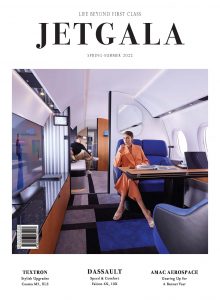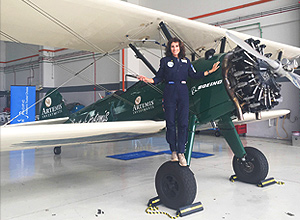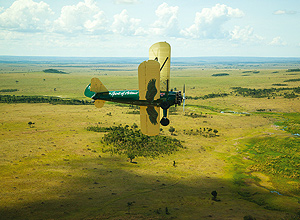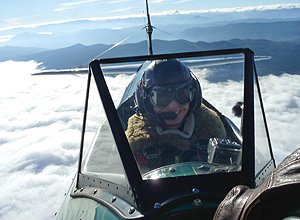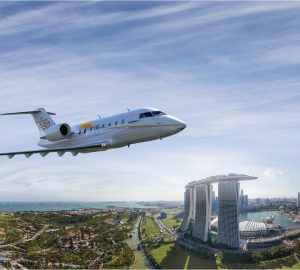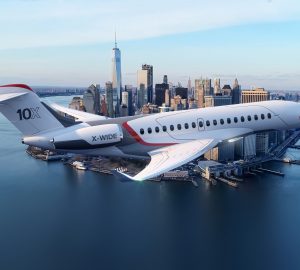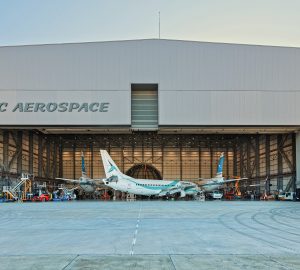Tracey Curtis-Taylor – The Avix Aviatrix
ONE WOMAN’S EPIC JOURNEY FROM BRITAIN TO AUSTRALIA IN A BIPLANE
IN 1930, AMY JOHNSON MADE HISTORY WHEN SHE BECAME THE FIRST BRITISH FEMALE PILOT TO FLY SOLO FROM CROYDON, LONDON TO DA RWIN, AUSTRALIA IN 19 DAYS IN HER DE HAVILLAND DH.60 GIPSY MOTH.
She would go on to set more aviation records before dying in a plane crash at 37 years of age. In October last year, 74 years after Johnson’s death, another British aviatrix decided to recreate Johnson’s pioneering solo flight from Britain to Australia.
Setting off from Farnborough, Hampshire on October 1, Tracey Curtis-Taylor began a 12 to 14-week (at print time) journey across 23 countries — including 50 refuelling stops — to Sydney, Australia. Jetgala sat down with Curtis-Taylor for an exclusive interview in mid-December when she made her Singapore stop — and even got to peek inside the cockpit of her beloved Boeing Stearman.
Q: What sparked your interest in aviation?
My family and I went to all the air shows when I was growing up. But what really stuck with me were old aviation films. It made me die laughing when I saw somebody strap wings on and jump off the end of the pier. That probably began my obsession with flight. I love the early planes. It’s completely romantic and whimsical but that’s my approach to flying. It became a hobby. I’m not interested in modern procedural flying. I’ve never been a professional flyer. I’m just an enthusiastic aviator.
Q: What’s the single biggest challenge you’ve faced on the trip so far?
It’s always the weather. We came through some shocking weather in Eastern Europe that put us four days behind schedule. It was winter so there was pouring rain, strong winds, some fog and low clouds. We were down at 50 feet dodging power lines. It was terrifying. My first thought is always to just land and get a large drink. But the thing is a plane can’t just stop. A couple of times I was thinking, “Right, pick a paddock because we might have to land here”. You don’t want to be in that situation. Unlike Amy — who was trying to break a world record — she was trying to get there quickly and would take all sorts of risks. Even with forecasts, it’s still an unpredictable element. Particularly here in equatorial regions.
We also had some pretty grim weather in Saudi Arabia where the dust storms reduced visibility. But it was difficult in India as well. This time of the year, they have smog and fog resulting in very poor visibility. You may be flying in peace but you can feel it in your eyes — the dirt and smog makes it absolutely filthy to get through. It was very difficult.
Q: What is one thing that has surprised you the most?
The flying is out of this world. There are some really spectacular geographical landmarks to fly over like the Mediterranean and the Dead Sea. It blows your mind. We all think about these amazing man-made monuments like the Taj Mahal but then they become quite trivial. It’s the beauty of geological features that you see. The rift valleys like Phang Nga Bay and the Jurassic limestone formations piercing the water. I’m so close to the rock faces that I can see the individual flowers when I’m winging over jungles in Burma. It’s absolutely stunning. The scenery changes from country to country. You spend all this time studying the maps and flight planning but nothing prepares you for three-dimensional views.
“THE FLIGHT IS A METAPHOR. I WISH WOMEN WOULD HAVE THE SUPPORT, THE OPPORTUNITY AND THE ENCOURAGEMENT TO DO ANYTHING”
Q: Tell us more about your plane, the vintage Boeing Stearman. Why did you pick it and what do you love about it?
This is my dream airplane. It’s a big, classic, strong, reliable American biplane. Most of my early flying was done on American planes under military training. I love them because they are exciting, beautiful to look at and fantastic to fly. If you do something like this, you have to love your plane. I have absolute confidence in it. I’ve been so besotted with the Boeing Stearman for years. I love how they look. For me, it encapsulates that whole era from the 20’s and 30’s. I’d flown them a couple of times so when I decided that I was going to try to fly up Africa, I was only going to do it in a Boeing Stearman. I tried to hire one in America and South Africa but there was nothing suitable. I then tried to buy one. In the end, I typed ‘Stearman Europe’ in Google and the results came up with 3G Classic Aviation Europe, a company that produces probably the finest Boeing Stearman restorations in the world. It took almost a year to restore it and they did a stunning job.
Q: What were some modifications made to the biplane to better suit the flight?
Extra fuel capacity was needed for this long distance flight so extra fuel tanks were put in the top wing. A slightly bigger engine was put in place of the original. Although the air frame is 1942, the engine is 1943 with 300 hp.
Q: What are the biggest difficulties you face flying in an open cockpit?
You’re exposed to the elements. You’re sunburnt, blown by the wind, and dehydrated. People ask me how I go to the bathroom. The answer is I don’t. The maximum time I spend on the plane is five hours so I don’t drink too much. I have water with me while I’m flying but I manage it. It has never been a problem. But when Amy was flying, she had twice the range. She could fly for up to 11 hours. So she was going to the loo in it. I don’t know what she did but she must have had a nappy on or something.
Q: What is the emergency plan should anything go awry?
An engine failure would probably be the worst scenario. I fly over different terrain so that would be catastrophic. I can always ditch it in water but if I am over the jungle, there is nowhere to land. I’ll look out for roads and where the wind is coming from to try and slow it down. You need to get as close to the ground as possible to reduce the impact. The Stearman has a big airframe on it so as long as the area is reasonably clear, you’d survive it. The plane would most certainly flip so I’d hope I’m not that injured to escape. I don’t wear a parachute. They are heavy, bulky, and uncomfortable to fly in. But I fly low anyway so I decided I didn’t need one.
“I’VE NEVER BEEN A PROFESSIONAL FLYER. I’M JUST AN ENTHUSIASTIC AVIATOR”
Q: What are your pre-flight rituals?
I don’t have any. I just can’t wait to get in and go. With all the time it takes for airport clearance, I can’t wait to get into the air. One airport took seven hours to clear and I just lay on my bag in my seat and slept. I do wear a little globe around my neck. One of my closest friends, Dame Diana Rigg, gave it to me three years ago. It’s handmade and has ‘Africa’ and ‘Australia’ written on it, which is the Southern hemisphere. So that’s my good luck charm. An old friend from the Air Force also gave me his original RAF Wings that I pin to my flight suit.
Q: What do you hope for for aviatrixes now and in the future?
I wish women would have the support, the opportunity and the encouragement to do anything. The flight is a metaphor. I want people to have the opportunity and the freedom to make choices. I see some of these girls in the countries I’ve stopped in and they live in restricted societies. It’s really difficult for women, especially in the Middle East. By the time they get married, they disappear off the radar. They don’t have free, independent lives. I am amazed at the response I get from children asking me if I ever thought I would fly and what it’s like. Very few people get to do what I do. When I look back at the choices I’ve made, I wanted a freer, adventurous and more romantic life. I have women coming up to me and saying, “I wish it were me” and “I wish I was coming with you”.
What makes Amy so special was that she was a very modern, liberated girl who did an extraordinary thing when she found aviation. Funnily enough for me, I was lucky that I was just as passionate about it. Even though it wasn’t a career option and I couldn’t join the military because they didn’t accept female pilots, it never occurred to me until later. My flying experience was very unusual. I’ve been trained by military pilots on old planes so that’s how I picked up lowlevel flying. I’m pretty damn lucky.
Q: If you weren’t a pilot, what would you be?
I would have studied geophysics. In flying, I get to see the geology and geography of the ground and in rock formations. I absolutely love nature. And I have a huge interest in gemstones and diamonds.
Q: What is the next great adventure?
America, Spring 2016. Boeing has a great 70-year history here in Singapore but for America it would mark 100 years. I’m going to take the Stearman home. It’ll be shipped from Sydney to Seattle where Boeing was founded. After I finish this documentary that we’re doing for this trip, I’ll write a book about it. So that’s the plan.
